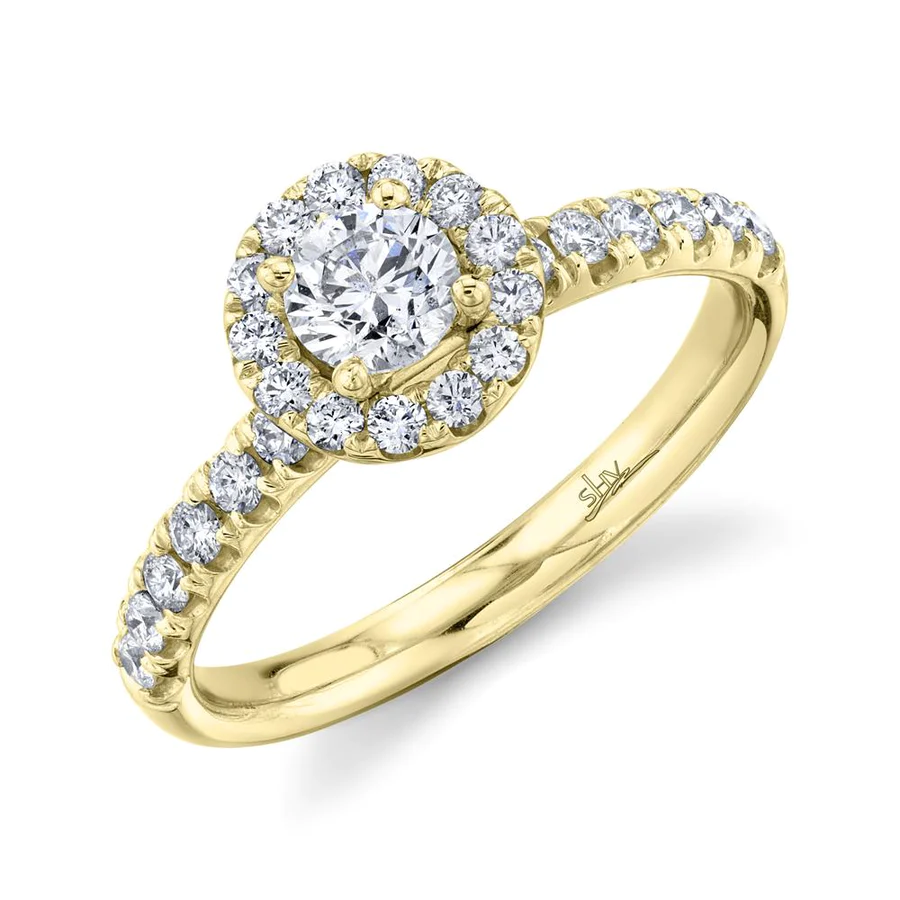JEWELRY EDUCATION
Metal Guide
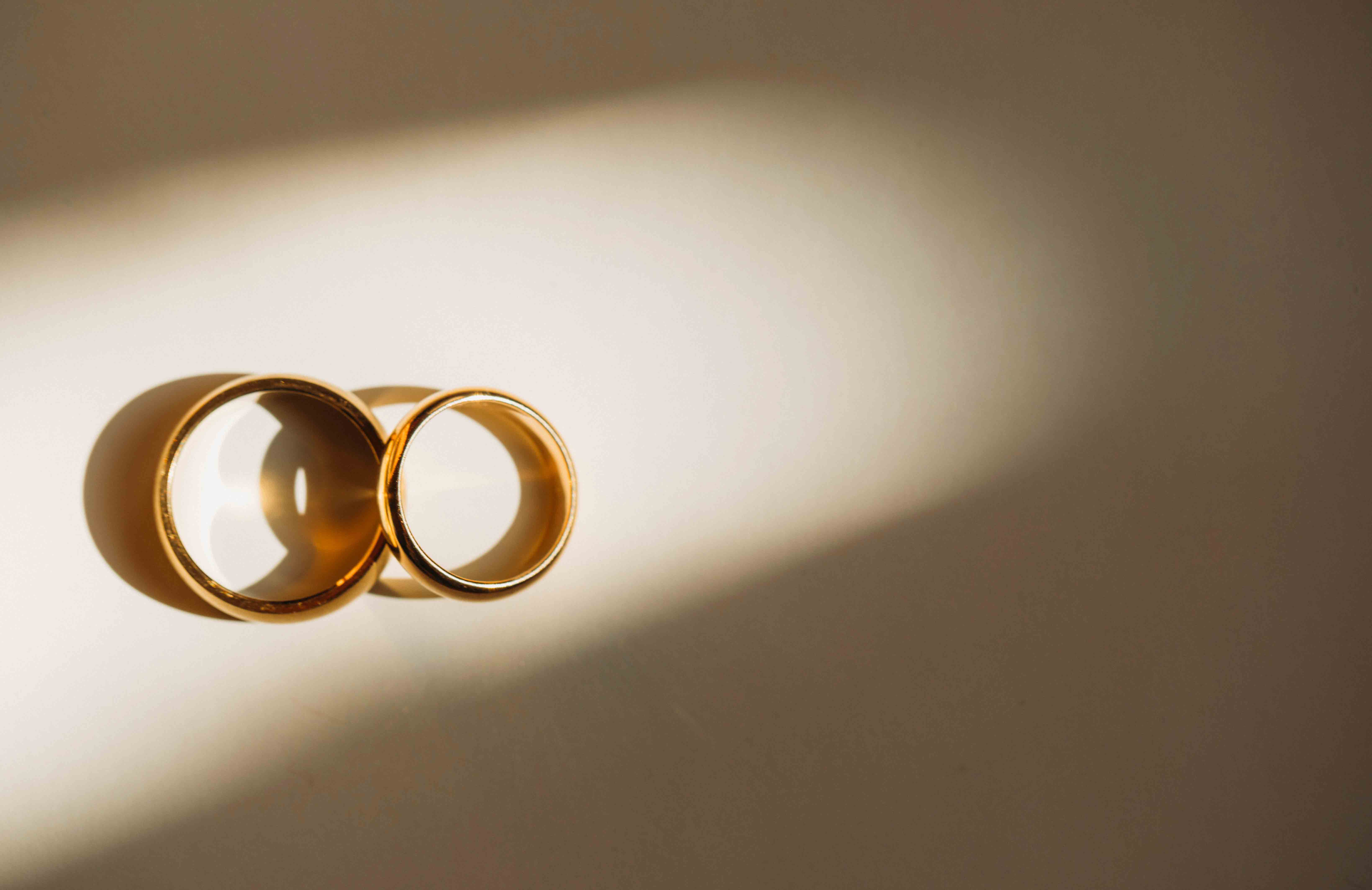

Fine jewelry has the power to express love, mark milestones, and elevate your personal style.
That said, the choice of metal is a crucial aspect that influences the appearance, durability, and value of a piece!
In this comprehensive guide, we’re going to delve deep into the most popular fine jewelry metals, including gold, platinum, and palladium, and explore the significance of alloys. We hope that by the end, you’ll be well-equipped to make an informed decision when choosing the perfect metal for your jewelry.
Gold: A Timeless Classic with Enduring Appeal
Gold has been enchanting humankind for millennia with its natural luster, warm hue, and resistance to tarnishing. This precious metal has not only been a symbol of wealth and status but also an integral part of many cultures and traditions around the world.
Understanding Karats in Gold
The purity of gold is measured in karats (K), with 24-karat gold representing the purest form. The karat system is a fractional measure where 24 karats signify pure gold, which means that 24 out of 24 parts are gold without any other metals mixed in.


To calculate the purity of gold in a piece, divide the number of karats by 24. For instance, 18-karat gold is 18/24 parts gold, or 75% pure gold.
Why Alloys Matter in Jewelry
Pure gold is too soft for daily wear, so it’s often combined with other metals to form an alloy. An alloy is a mixture of two or more metals, which enhances the strength, durability, and even the color of gold. For example, mixing gold with copper creates a redder metal, while adding silver can result in a paler yellow hue. The choice of alloy metals significantly influences the final appearance and characteristics of the gold piece.
Yellow Gold: The Epitome of Tradition and Luxury
First up we have yellow gold. It’s the quintessential gold, comprising pure gold mixed with alloy metals like copper and zinc. The proportion of pure gold in the mix determines the karat value, with 18K gold containing 75% pure gold and 14K gold containing 58.5% pure gold.
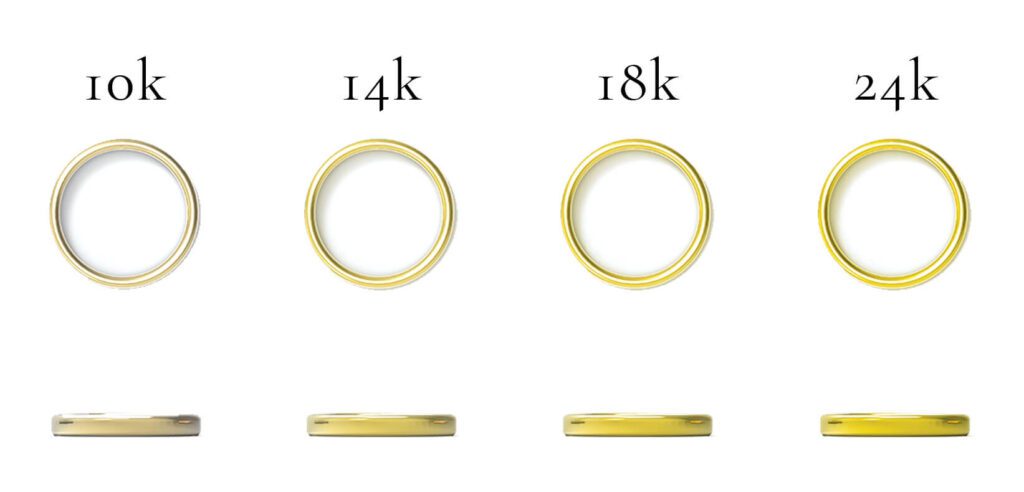

Lower karat values, such as 10K gold, contain less gold, making them more affordable and durable, but less valuable. Appearance wise, lower karats of yellow gold do have a more muted appearance, with higher karats looking more vibrant and yellow. 14 k gold is a popular choice in fine jewelry pieces, as the alloy has a great degree of durability while retaining the warm, yellow hue of pure gold.
White Gold: A Contemporary Alternative
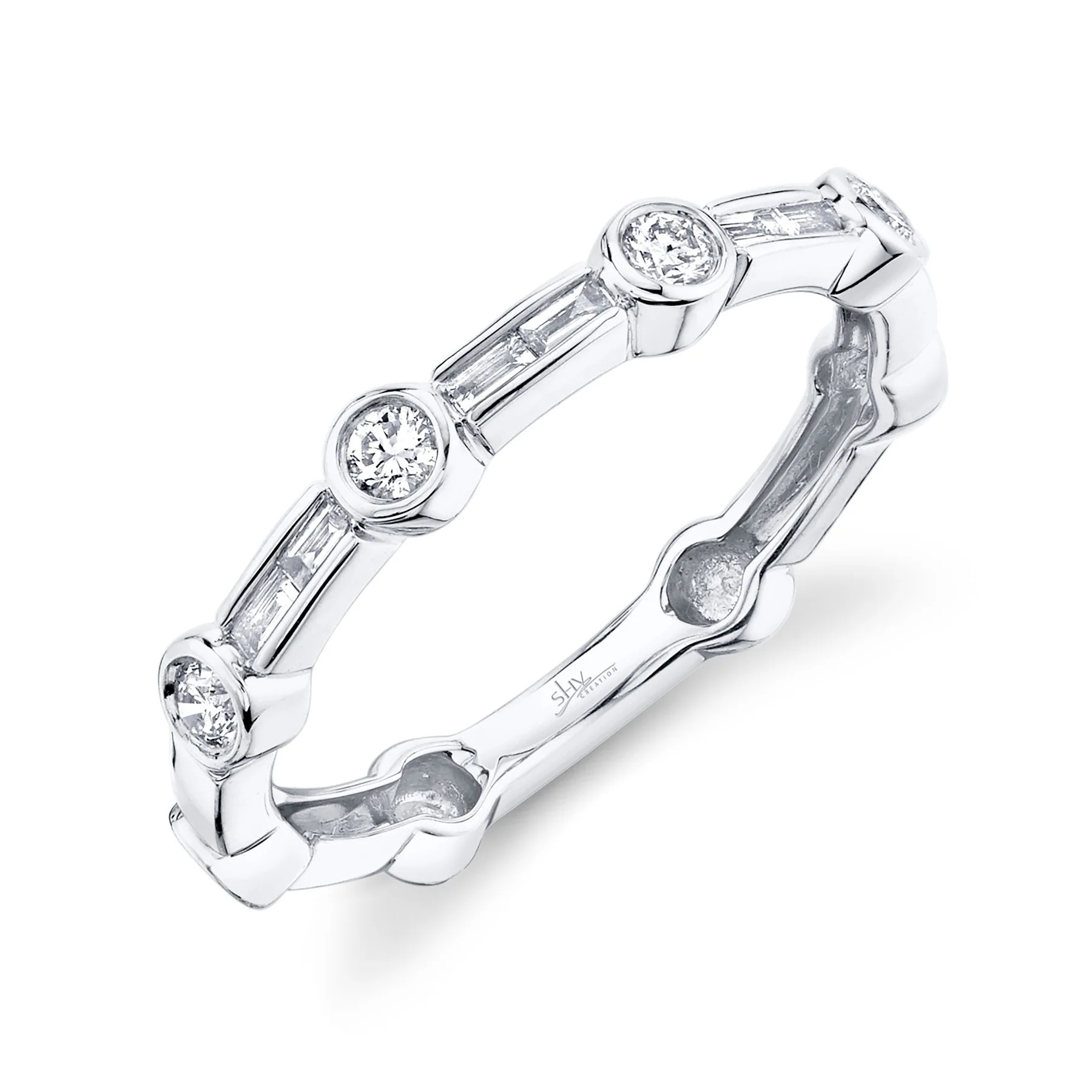

White gold is an alloy of gold and other metals, such as nickel, palladium, or silver, which gives it a silvery-white appearance.
It’s often plated with rhodium, a rare and valuable metal, to enhance its brightness and protect it from scratches. Over time, the rhodium plating may wear away, necessitating re-plating to maintain its appearance.
White gold is perfect for those seeking a contemporary and cool aesthetic that complements both casual and formal attire.
Rose Gold: Romantic and In Trend
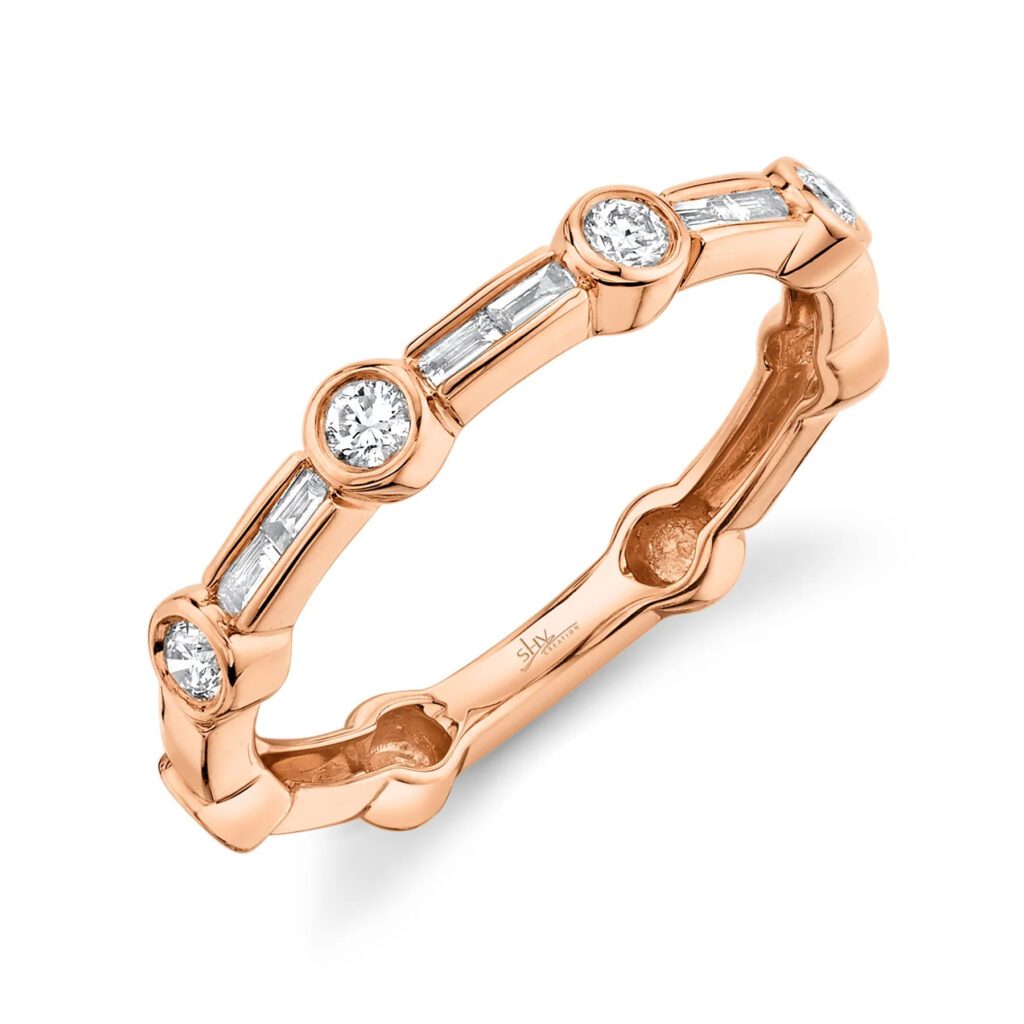

Rose gold, also known as pink or red gold, is an alloy of gold and copper that exudes a warm, pinkish hue and has become a super popular choice over the past few years.
The copper content determines the shade of rose gold; more copper results in a deeper red color.
Rose gold is durable and tarnish-resistant, making it an increasingly popular choice for modern jewelry designs, and its unique hue adds a romantic and trendy touch to any ensemble or outfit.
Other Popular Fine Jewelry Metals & The Spectrum of Choices
In addition to gold, several other metals are popular choices for fine jewelry, including platinum, palladium, sterling silver, titanium, and stainless steel.
Platinum: The Pinnacle of Luxury and Durability
We have platinum which is a rare and precious silvery-white metal that is prized for its strength, durability, and hypoallergenic properties.
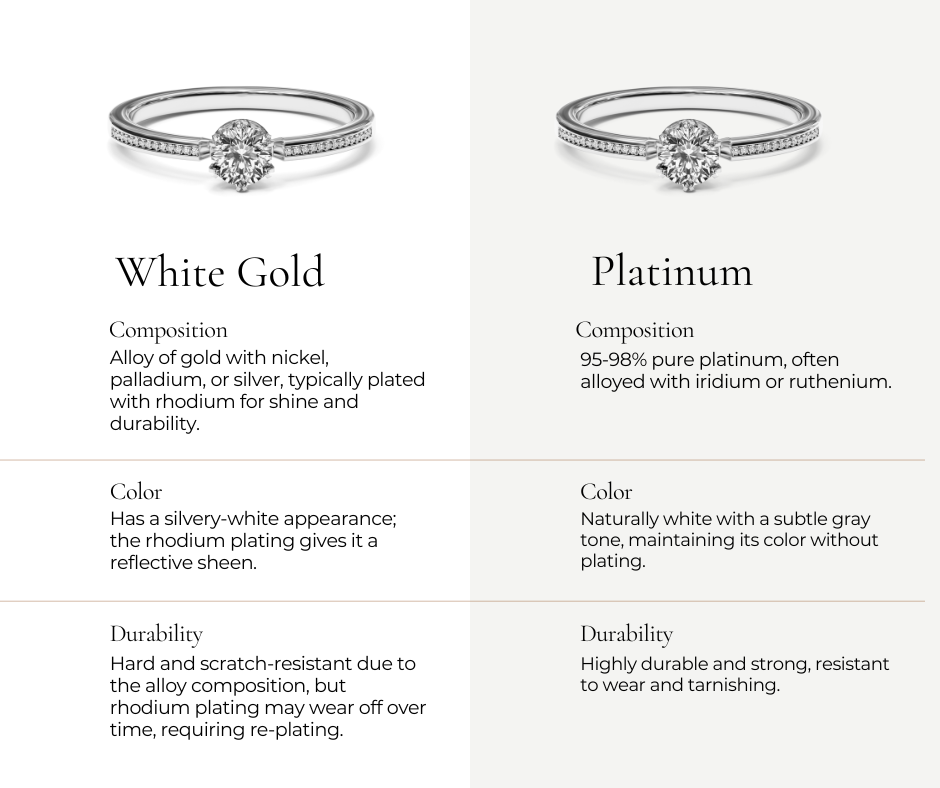

Platinum is denser than gold, making it heavier and more durable, but also more expensive.
With that said, it has unparalleled resilience and a sophisticated appearance making it the ultimate choice for those who value the finer things in life. Often used in high-end jewelry, the metal symbolizes luxury and prestige.
Palladium: A Lighter and More Accessible Cousin of Platinum
Palladium, a lustrous silver-white metal, belongs to the same family as platinum. Like platinum, palladium is hypoallergenic and resistant to tarnishing, making it an excellent choice for those with sensitive skin or allergies.
While the metal shares many of platinum’s desirable properties, palladium is generally more affordable due to its lower density and lesser rarity, and it’s an attractive alternative for those seeking the benefits of platinum without the premium price tag.
Sterling Silver: A Versatile and Affordable Classic
Sterling silver is a popular and more affordable alternative to both gold and platinum.
Comprising 92.5% silver and 7.5% other metals (usually copper), sterling silver is a versatile and attractive metal for jewelry so it’s certainly more prone to tarnishing and scratching than gold or platinum and requires more care to maintain.
It’s a great choice for those looking for stylish and budget-friendly jewelry options though.
Titanium: Minimalism and Strength
Titanium tends to be a lightweight, strong, and corrosion-resistant metal that has gained popularity in recent years, particularly for men’s wedding bands and other contemporary jewelry styles.
The metal’s hypoallergenic properties make it an excellent choice for those with sensitive skin or metal allergies. And while not as precious as gold or platinum, titanium offers an attractive and durable alternative for those seeking a modern and minimalist look.
Stainless Steel: Sleek, Practical, and Budget-Friendly
Stainless steel is a corrosion-resistant, durable, and affordable metal that is sometimes used in fashion jewelry and watches.
And although it’s not as prestigious as gold or platinum, stainless steel offers a sleek, modern appearance and is a practical choice for those seeking low-maintenance and budget-friendly options.
Factors to Consider When Choosing the Metal for Your Jewelry
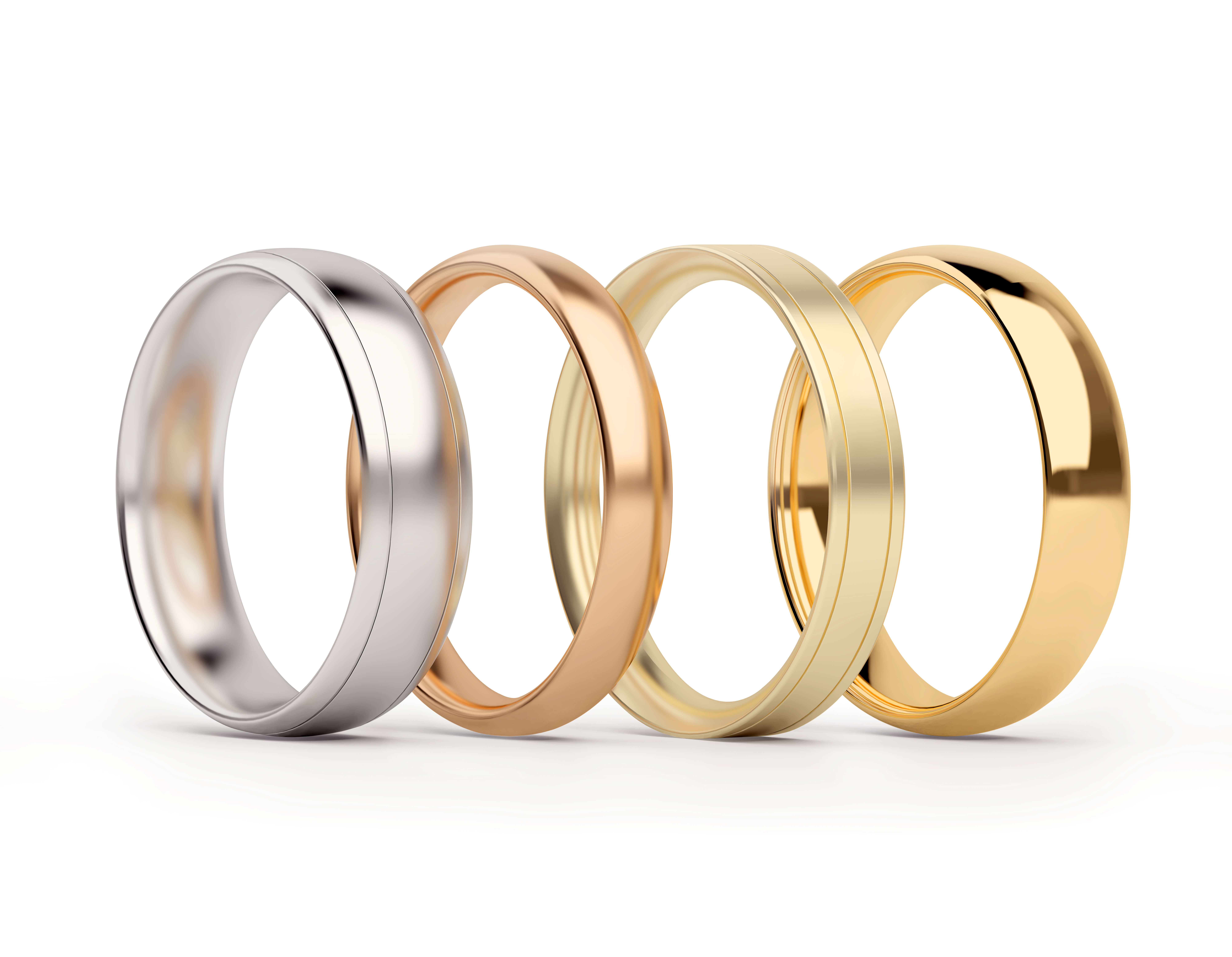

Understanding the properties and characteristics of popular fine jewelry metals will help you make an informed decision when it comes to finding the perfect piece and making sure you choose the one to suit your needs and preferences.
But there are other factors to consider when selecting the perfect metal for your fine jewelry, including:
1. Your style: Think about the color and finish of the metal and how it complements your skin tone and personal style. Your choice should resonate with your unique aesthetic.
2. Durability: Some metals are of course more durable and resistant to wear than others. Platinum and palladium are known for their strength and resistance to tarnishing, while sterling silver and gold may require more care to maintain their appearance. Certain pieces that are more susceptible to wear, such as a 24K yellow gold bracelet, would likely be better suited for special occasions, whereas more durable items, like a 14K white gold wedding band, can be worn daily. Choose a metal that suits your lifestyle and the intended use of the jewelry.
3. Budget: The cost of fine jewelry metals varies significantly, with platinum and high-karat gold being the most expensive options. Consider your budget when choosing the metal and remember that there are affordable alternatives that still offer an elegant and stylish appearance.
In summary, the journey of selecting fine jewelry is as personal as it is practical. Balancing your style preferences, understanding the durability of different metals, and aligning your choices with your budget are key steps in this process.
Whether you’re drawn to the classic elegance of gold, the enduring strength of platinum, or the unique charm of less conventional metals, your selection should not only suit your aesthetic but also fit comfortably into your lifestyle.
Armed with this knowledge, you’re well-equipped to choose a piece that’s not just an accessory, but a treasured expression of your individuality and a lasting addition to your collection.

